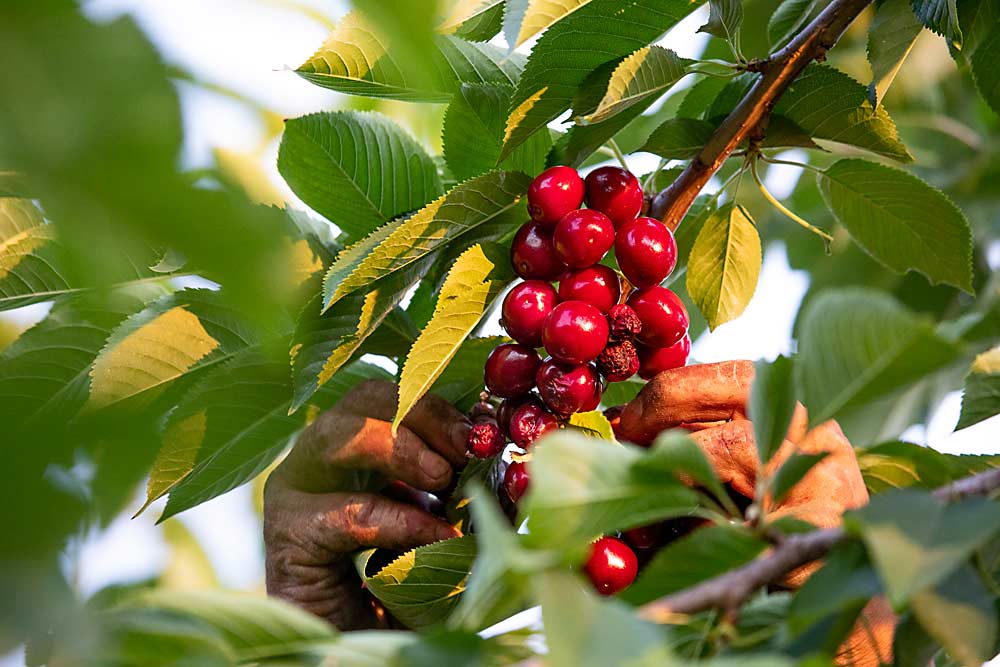
Record-setting summer heat took a big bite out of the Northwest cherry volume, but the industry will discuss the effects for months to come.
“We’re going to talk about this crop for a long time,” said Dale Goldy, a Mattawa, Washington, grower who harvested cherries in the middle of the night, trying to beat the heat, and still lost some of his blocks to heat and wind damage this year.
The late-June to early-July heat wave set record temperatures throughout the Pacific Northwest and sent many growers racing to harvest early with crews working through the dead of night.
The heat brought down cherry sizes and cut into the overall volume by about 20 percent, according to estimates from Northwest Cherry Growers, a Yakima, Washington, organization that collectively promotes cherries for five Northwest states. Bing and Rainier took the biggest blows, though Skeena also suffered.
This year, right before the heat wave, the group’s estimation team called for an overall harvest of 22.3 million 20-pound equivalent boxes. Shortly after the heat wave, the organization estimated the extraordinary temperatures would bring that down to 18 million.
Predictions are always tricky. The group publishes regular crop volume estimates as the season progresses every year, and changes due to weather and other shifting conditions are common. Even by late July, when this issue went to press, damage assessments were still best guesses.
“We’ve never seen anything like this, so it’s a true anomalous event,” said B.J. Thurlby, president of Northwest Cherry Growers. The closest was a week or so of 105 degrees in July 2017, he said. That crop ended up not so bad, Thurlby said.
In 2021, two spring frosts, windstorms in April and June, and a larger-than-usual market overlap with California didn’t help, either.
“It’s been a battle from Day One,” Thurlby said.
Ramifications will become clearer with grower returns in the fall. They might stretch into next year, too.
Extreme heat one year can cause doubling the next. Doubling, or polycarpy, occurs when buds of heat-stressed trees develop multiple pistils, leading to doubled fruit the next year. It’s more common in California, but it happens in the Northwest, too, said Matt Whiting, a Washington State University tree fruit physiologist. Bing cherries are relatively heat tolerant, but some of the industry’s new varieties aren’t so much.
Timing is key. Doubling typically occurs when heat stress hits around four to six weeks after harvest, as emerging buds initiate next year’s pistil, Whiting said. This year’s heat wave happened right at harvest for many growers, which may have actually boosted the trees’ heat tolerance for later, according to some of his students’ research over the past 10 years.
“I think next year will not be so bad,” he said, at least for the growers who harvested by the Fourth of July.
Always variability
As always, nuance will play a role in the 2021 heat wave story.
Eric Olson of Selah, Washington, harvested a record volume, even though he walked away from one-third of his trees.
“I guess old Eric is just lucky,” he said.
Part of his orchard sits atop a hill, exposed to the sun, but the rest has an east-facing slope with afternoon shade.
When the heat first hit, Olson and his packer representative planned to completely skip harvest and declare a total loss. But, once nights cooled down, his cherries resumed growing. His packouts were lower than normal overall, but some of his later bins were about 90 percent 10-row or larger.
Harvest was challenging. He instructed his crews to throw shriveled cherries from the tops of clusters to the ground and salvage the protected fruit underneath, doubling the usual season-ending bonus for their pains.
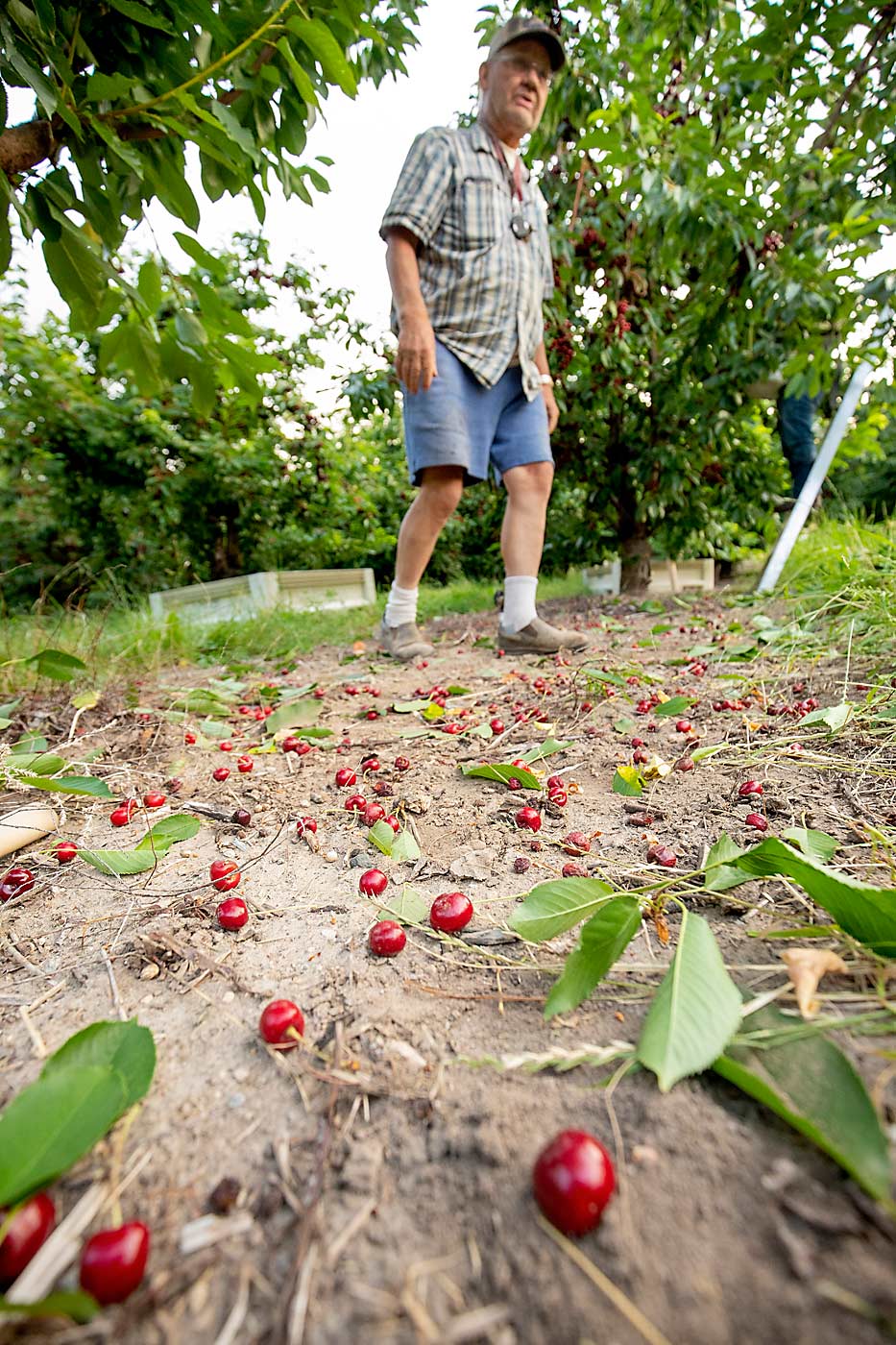
“Our pickers have just done a magnificent job,” he said.
The heat wave may have lasting effects on harvest practices.
Like other growers in the state, Goldy purchased headlamps and rented construction lights so his crews could harvest Skeenas in the middle of the night at his Raven Orchard in Mattawa. That was the only way to ensure a full workday for his crews and get fruit off in time. On June 29, the temperature in Mattawa topped 95 degrees by 8 a.m., according to AgWeatherNet. His crews liked working at night, so they moved the floodlights to Goldy’s nursery, where heat carries fewer plant physiological risks than in cherries.
Once it cooled down, his crews returned to their typical shifts, though predawn start times may be used again, he said.
Goldy estimated he lost about 10 percent of his crop, both to heat and damage from an early June windstorm. He completely skipped one Santina block.
He also suspects timing made a big difference. Fruit harvested at the peak of hot weather fared pretty well, but some of his later fruit, including some Rainiers, ended up with high acidity but decent size, firmness and sugars.
“Far and away, this has been the worst cherry season I’ve ever been through,” he said.
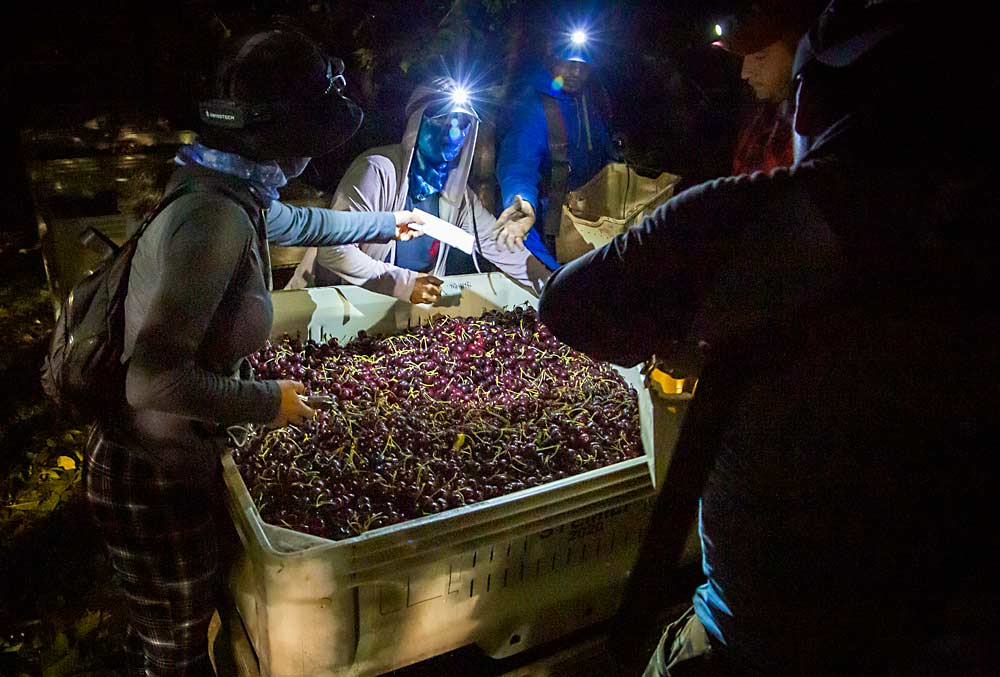
Oregon also struggled in the heat. Farmers in Wasco County, the state’s largest cherry producer, estimated about 56 percent of the acreage suffered heat damage, according to surveys by Ashley Thompson, a tree fruit extension horticulturist for Oregon State University.
Throughout the Columbia River Gorge region, growers reported damage ranging from 15–100 percent, describing shriveled and sunburned fruit, picking cherries for brine and significant packout reductions. Some were even turned down by processors.
She knew of no growers who harvested at night, due to the terrain of the area.
Looking ahead, she hopes to compare heat damage by variety, rootstock and training systems for some long-term lessons for the next heat wave.
“Because this isn’t a once-in-a-lifetime event,” she said.
—by Ross Courtney
States respond with emergency regulations
The Northwest’s record-setting heat wave prompted state workplace safety officials to enact emergency regulations in early July to protect outdoor workers, including those in agriculture. Both Washington and Oregon mandated expanded access to shade and cool water and required additional training, planning and communication protocols specific to hot weather.
Washington employers already followed state heat protection rules, but the Department of Labor and Industries set emergency rules, in effect through Sept. 30, that require employers do the following:
—Provide shade or other ways for workers to cool down when temperatures reach 100 degrees Fahrenheit.
—Provide worker training with details of heat response procedures.
—Provide “suitably cool” drinking water.
—Ensure workers take paid cool-down rest periods of at least 10 minutes every two hours when the temperature hits 100 degrees.
—Allow and encourage workers to take a preventative cool-down rest break “when they feel the need” in temperatures between 89 and 100 degrees.
For more information, visit: lni.wa.gov/safety-health/safety-training-materials/workshops-events/beheatsmart.
The Oregon Occupational Safety and Health Administration set new rules even stricter than Washington’s, requiring employers to do the following:
—Provide shade and cool water for employees in temperatures 80 degrees Fahrenheit or higher.
—Ensure employees are observed for symptoms of heat illness and monitored to determine whether medical attention is necessary in temperatures 90 degrees or higher.
—Provide a 10-minute cool-down rest period in the shade for every two hours of work when the temperature hits 90 degrees.
—Also at 90 degrees, develop and implement an emergency medical plan and practices to gradually adapt employees to working in the heat.
—Train all workers in the risk of heat illness, the requirements of the heat rules, the importance of reporting heat illness and how to recognize symptoms of heat-related illness.
For more information, visit: osha.oregon.gov/news/2021/Pages/nr2021-26.aspx.
—R. Courtney

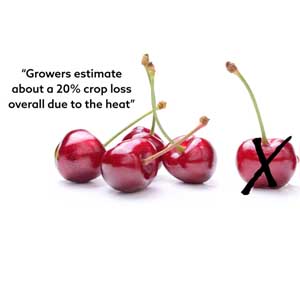
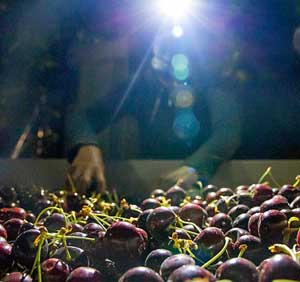
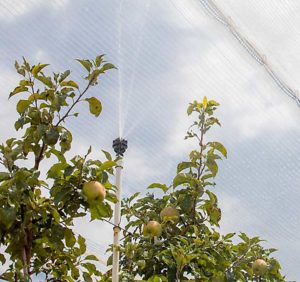





Leave A Comment